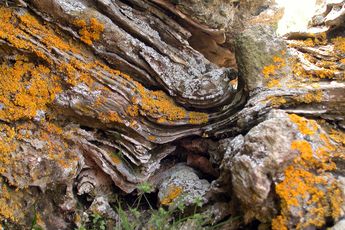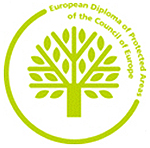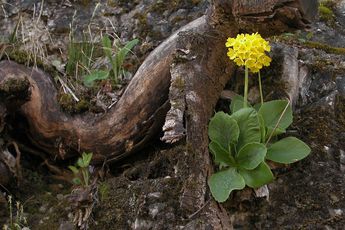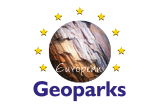Balaton Uplands National Park Directorate
 The Balaton Uplands National Park Directorate – as the leader organisation of the Bakony–Balaton Geopark – is working to achieve the goals of the geopark. Geological nature conservation, eco- and geotourism related tasks and environmental education, awareness raising are those activities of the Directorate that are most relevant to the operation of the geopark.
The Balaton Uplands National Park Directorate – as the leader organisation of the Bakony–Balaton Geopark – is working to achieve the goals of the geopark. Geological nature conservation, eco- and geotourism related tasks and environmental education, awareness raising are those activities of the Directorate that are most relevant to the operation of the geopark.
The Balaton Uplands National Park Directorate is also the managing body of several protected areas of national importance (1 national park, 3 landscape protection areas, 27 nature conservation areas and numerous ex lege protected objects, e.g. caves). The Directorate also carries out nature conservation management tasks on a number of Natura 2000 areas. The largest one of these is the Balaton Uplands National Park, founded in 1997. Most of the area of the national park (57.019 hectares) comprises six previous landscape protection areas.
 The Tihany Peninsula – as a recognition of its outstanding geological heritage – has been a European Diploma awarded area since 2003. The rare species of the flora and fauna (Cantabrican Morning Glory, Common Scops Owl, Cicada species) are present here also because of the relatively mild, Mediterranean-like climate, typical of the peninsula. The hilly landscape of Pécsely Basin, with its diverse micro-climate gives home to the only wild habitat of a strictly protected species, winter aconite. The Pécsely Basin is one of the most beautiful, almost intact regions of the country, thanks to the traditional agricultural methods that pose less negative impact on nature. The tiny villages of the Káli Basin hide many examples of wonderfully preserved folk architecture. The plant species depicted on the previous emblem of the national park, the strictly protected Primula farinosa lives here, and the Hungarian grey cattle herds and racka sheep flocks graze here. These traditional Hungarian domesticated animals are also part of our heritage. The basalt hills of Tapolca Basin are unique and picturesque representatives of abiotic nature and also serve as habitats of numerous extremely rare plant and animal species (e.g. Cheilanthes marantae, a fern species unique in Hungary). Besides the natural treasures, the famous wine culture that originates from Roman times and the built heritage of the wine hills and the villages enrich the landscape: castle ruins, church ruins, mansions, press houses and dwelling houses.
The Tihany Peninsula – as a recognition of its outstanding geological heritage – has been a European Diploma awarded area since 2003. The rare species of the flora and fauna (Cantabrican Morning Glory, Common Scops Owl, Cicada species) are present here also because of the relatively mild, Mediterranean-like climate, typical of the peninsula. The hilly landscape of Pécsely Basin, with its diverse micro-climate gives home to the only wild habitat of a strictly protected species, winter aconite. The Pécsely Basin is one of the most beautiful, almost intact regions of the country, thanks to the traditional agricultural methods that pose less negative impact on nature. The tiny villages of the Káli Basin hide many examples of wonderfully preserved folk architecture. The plant species depicted on the previous emblem of the national park, the strictly protected Primula farinosa lives here, and the Hungarian grey cattle herds and racka sheep flocks graze here. These traditional Hungarian domesticated animals are also part of our heritage. The basalt hills of Tapolca Basin are unique and picturesque representatives of abiotic nature and also serve as habitats of numerous extremely rare plant and animal species (e.g. Cheilanthes marantae, a fern species unique in Hungary). Besides the natural treasures, the famous wine culture that originates from Roman times and the built heritage of the wine hills and the villages enrich the landscape: castle ruins, church ruins, mansions, press houses and dwelling houses.
 The dolomite hills and the volcanic ranges of Keszthely Hills are among the most varied habitats of Hungary. From Sub Mediterranean steppe slopes to ancient beech forests and closed oak forests, from cool gorges that preserve ice age relict species (e.g. Primula auricula) to meadows, many habitats can be found with especially rich flora and fauna. Kis-Balaton – the only unit of the national park that does not belong to the Bakony–Balaton Geopark – is an internationally recognised bird habitat. Endless reed beds with smooth sheets of water, marshy meadows, large sedge communities and sedge tussocks, willow and alder groves and willow scrubs make up this landscape.
The dolomite hills and the volcanic ranges of Keszthely Hills are among the most varied habitats of Hungary. From Sub Mediterranean steppe slopes to ancient beech forests and closed oak forests, from cool gorges that preserve ice age relict species (e.g. Primula auricula) to meadows, many habitats can be found with especially rich flora and fauna. Kis-Balaton – the only unit of the national park that does not belong to the Bakony–Balaton Geopark – is an internationally recognised bird habitat. Endless reed beds with smooth sheets of water, marshy meadows, large sedge communities and sedge tussocks, willow and alder groves and willow scrubs make up this landscape.
The website of the Balaton Uplands National Park Directorate describes in detail the protected natural heritage of the area as well as the activities and actualities of the Directorate. You can find useful information on the visitor sites, nature trails, accommodations and educational activities of the Directorate. It is only a few clicks and you can choose from guided nature tours and geotours, other hiking possibilities, downloadable tourism brochures.
The official website of the Balaton Uplands National Park Directorate can be reached here.









